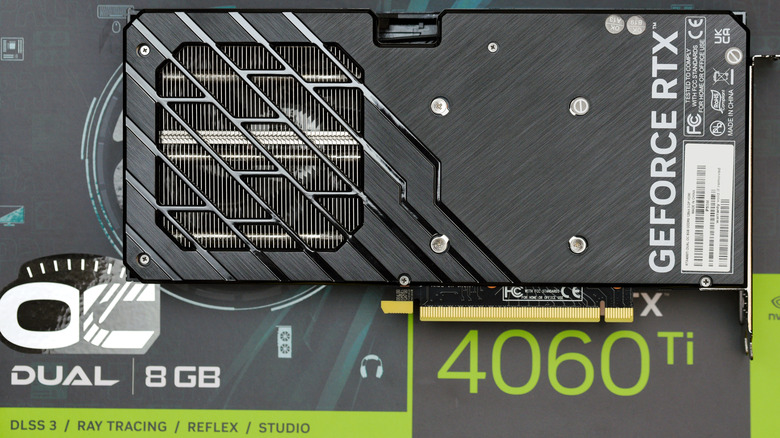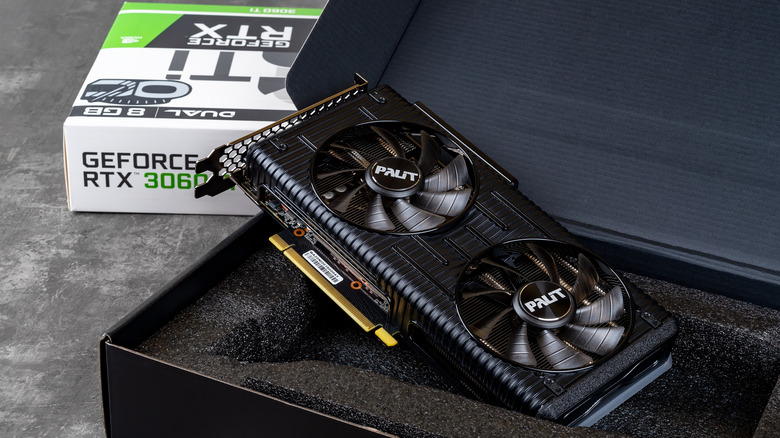What Does 'Ti' Mean When It Comes To Nvidia GPUs?
If you're in the market for a new Graphics Processing Unit (GPU), you'll probably have come across Nvidia's huge selection of components. The sheer volume of GPUs available can make picking the one that's right for you overwhelming, especially when their naming conventions aren't always the most self-explanatory. Nvidia's GPUs are generally titled based on their series, generation, and performance capabilities.
In addition to their number and series titles, some Nvidia GPUs have Ti as a part of their name, such as the GeForce RTX 3080 Ti or GeForce GTX 1660 Ti. GPUs labelled with Ti are generally an improvement on the non-Ti equivalent in the same range. So, they're typically going to perform better, depending on how they're used and optimized. As a result, they're also normally more expensive than their non-Ti counterparts.
The Ti part of these GPUs' names comes from the periodic symbol for Titanium in the Periodic Table. This doesn't indicate what the GPU is made of; instead, it's most likely intended to reflect the strength and reliability of Titanium as a material. GPUs are made of all kinds of other chemical and metal materials, though, from silicone and copper to tantalum and palladium.
What kinds of upgrades are included in Ti Nvidia GPUs?
The specific upgrades included in a Ti GPU depend on which series of GPUs it belongs to. Although Ti GPUs are always improvements on their previous versions, the changes aren't standardized across different product ranges. To find out exactly what's different between Ti and non-Ti GPUs, you're going to need to pick specific models and compare them. For example, if you look at the GeForce RTX 3080 and GeForce RTX 3080 Ti, the Ti has 2 gigabytes (GB) more memory and 1,716 more CUDA cores than the standard version. However, not every Ti GPU has 2 GB more memory than its equivalent.
Since the specific improvements found in one Ti GPU compared to another are variable, it's easier to compare a Ti GPU to the non-Ti version. Ti versions will always be more powerful, which is reflected in how well they render visuals or how efficient they are when in use. That means that a Ti GPU will generally perform better graphically when being used for gaming or video editing. You can generally note these upgrades most clearly in how smooth the visuals look, how fast the frame rate is or if you're dropping many frames, and what resolution your game will run at.

